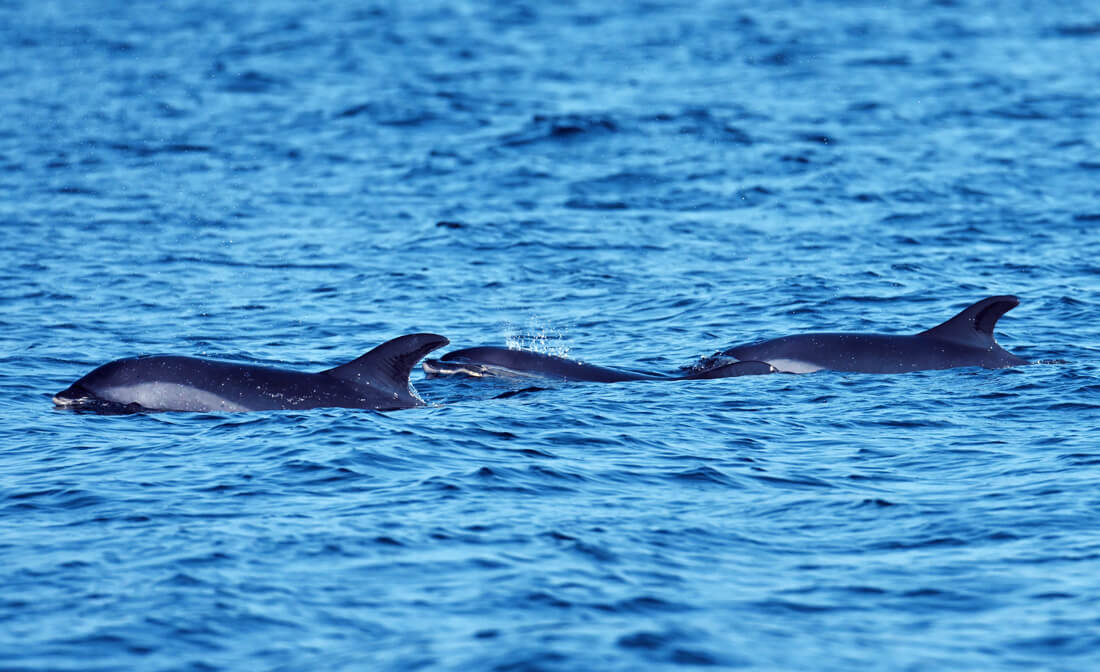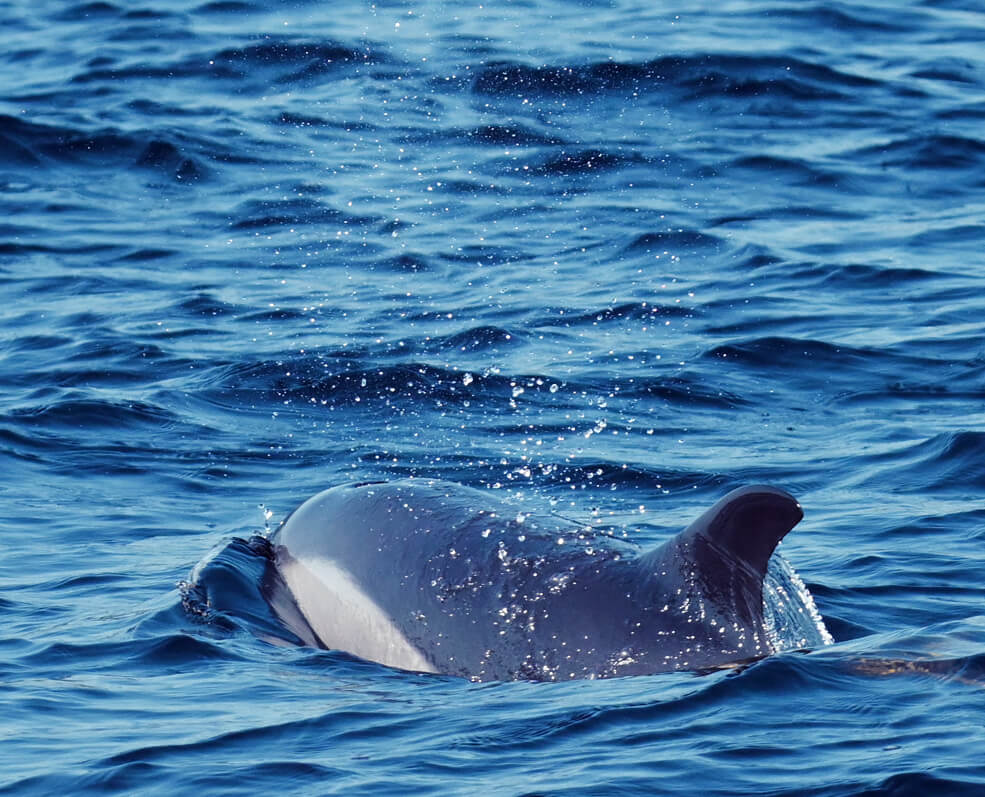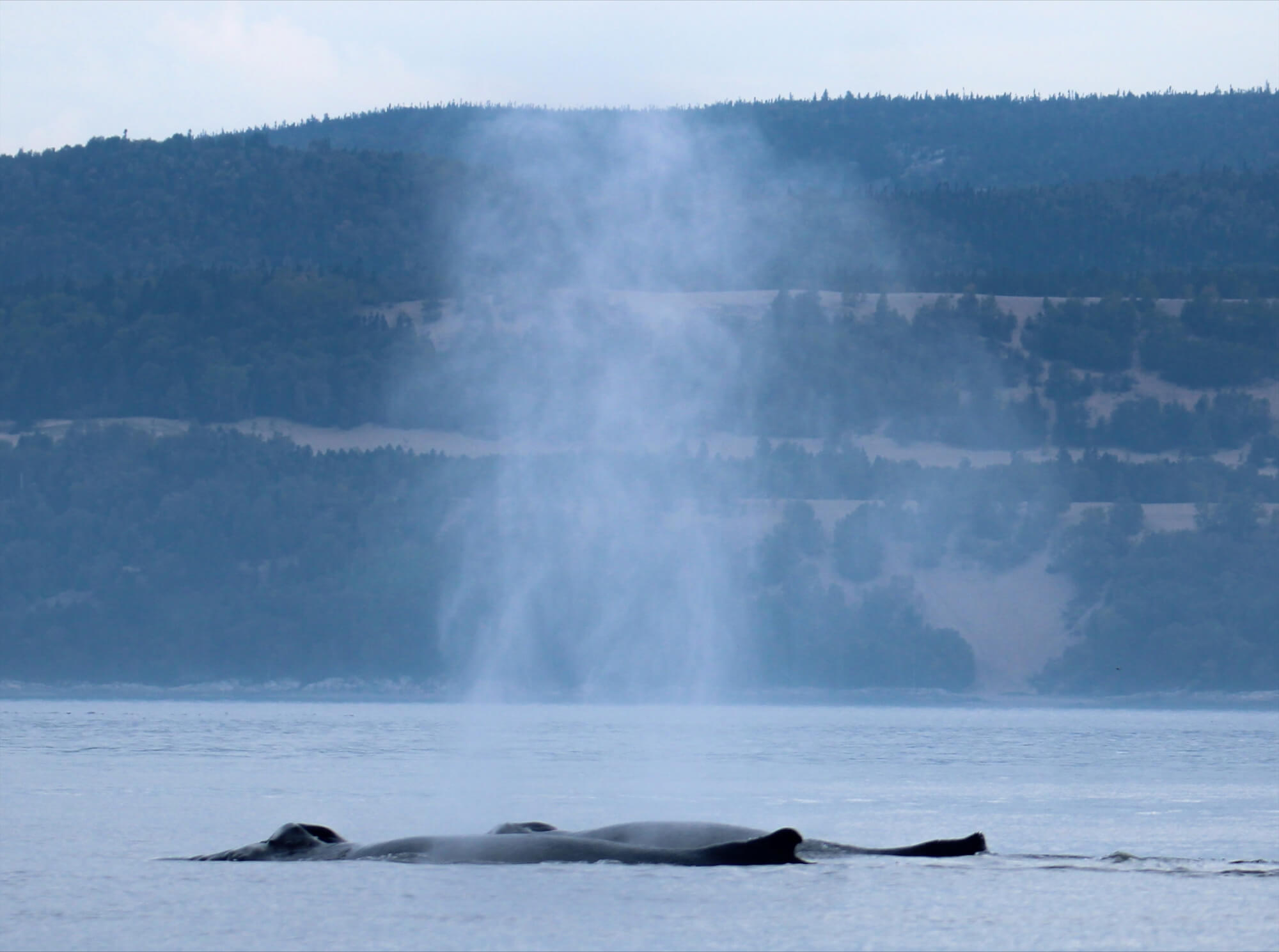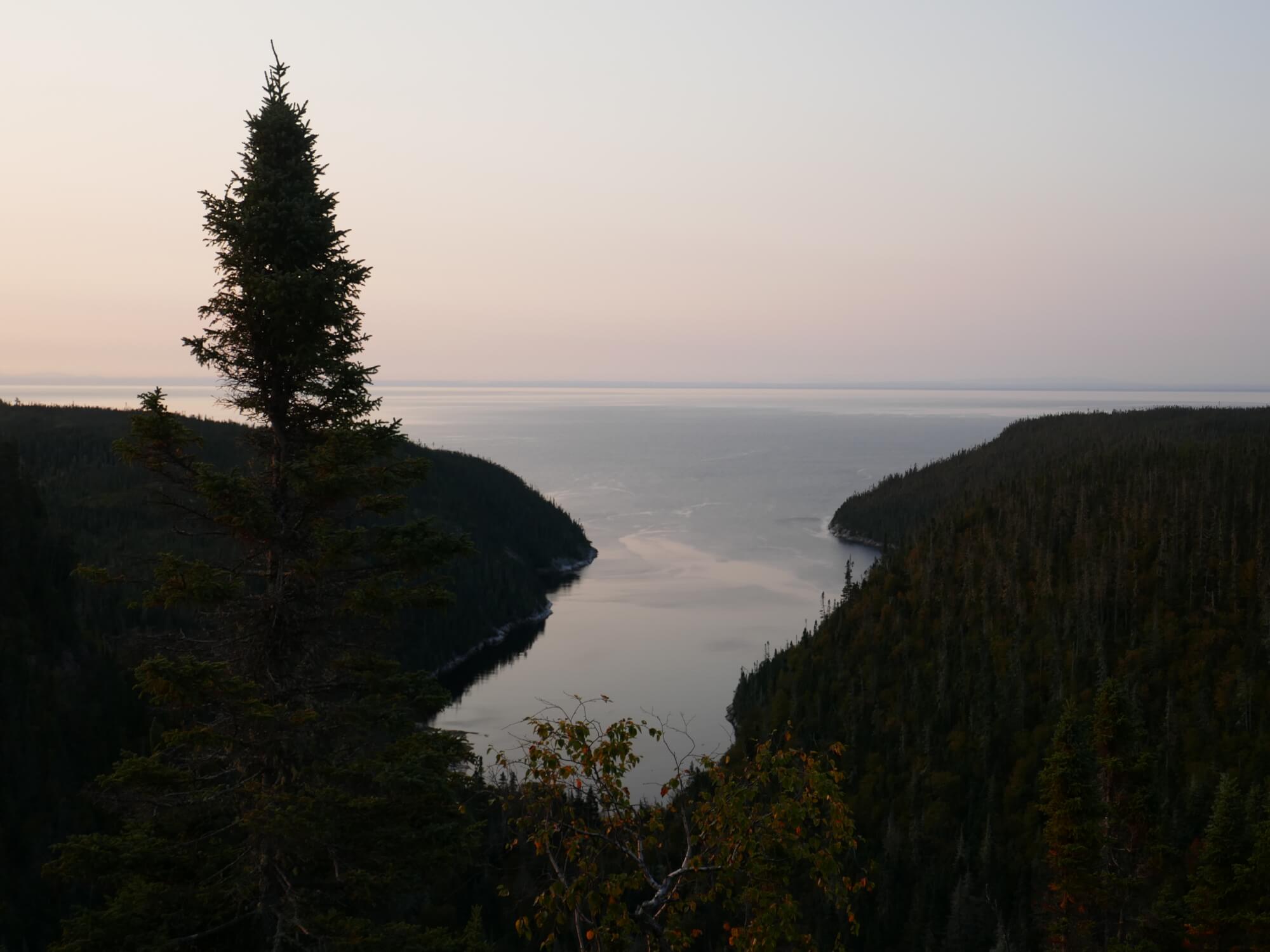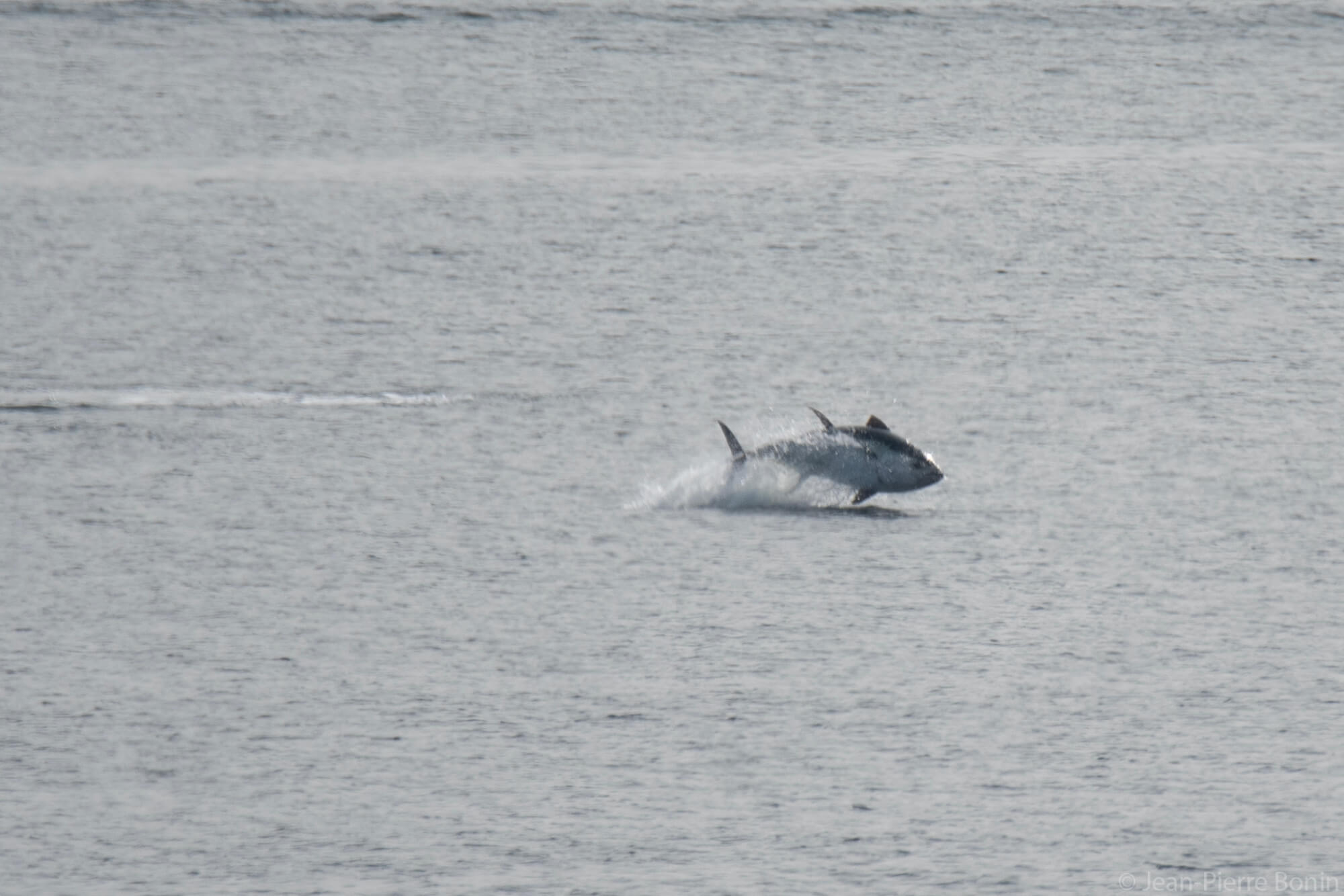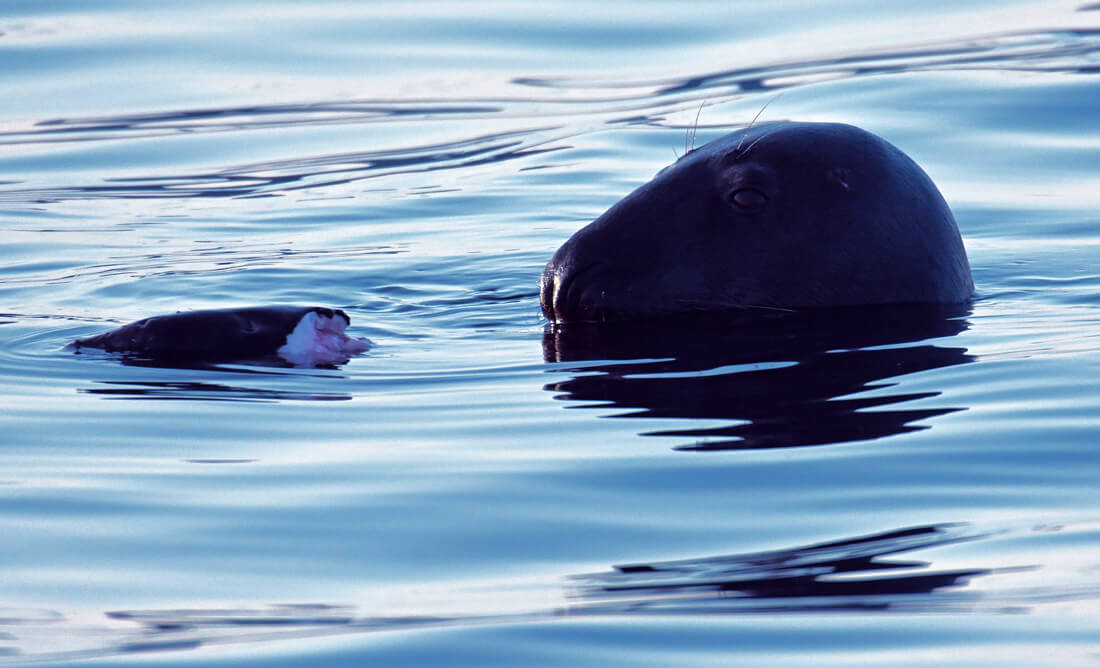They swim in groups in successive leaps, a palette of colours radiating above the water surface. We can distinguish white and grey, topped by a yellow stripe and dark blue. These are Atlantic white-sided dolphins making an expected return to the estuary, in addition to being present by the hundreds off Port-Cartier!
After having been observed in the gulf a little earlier in the season, the species was spotted on September 27 in the area between Tadoussac and Les Escoumins. Photographer and naturalist Renaud Pintiaux describes his sighting: “I love watching this species cut through the waves, sometimes at full tilt. […] This past Wednesday we encountered a small group of 6 individuals in the mouth of the Saguenay!” These cetaceans feed mainly on small pelagic fish, squid and occasionally small benthic crustaceans. Fast swimmers, they can reach speeds of between 25 and 45 km/h. In the St. Lawrence, their presence in the estuary is generally exceptional and short-lived.
Humpbacks in numbers
Humpback whales were the real stars of the St. Lawrence last week. More than 15 individuals were recorded in the Saguenay-St. Lawrence Marine Park, while near the village of Gaspé, a dozen or so humpbacks were reported in the salty waters of the bay. Might these whales – sometimes alone but often in groups – be developing affinities with each other? Or do they just happen to end up at the same feeding sites? Perhaps it’s a combination of the two, according to a study published by the Mingan Island Cetacean Study (MICS). In fact, humpback whales often appear to associate with each other at feeding sites on a short-term basis, i.e. for a few hours or a few days. Other relationships, however, are longer lasting, such as that of a female accompanied by her calf, or a male courting a non-lactating female. Two non-lactating females may also stay together for an entire feeding season or even several consecutive summers.
There are those moments when the night ends and gives way to the sun, when the sky is painted a thousand colours and the sparkling water becomes even more magical, that brighten up our days. Three naturalists from the Group for Research and Education on Marine Mammals (GREMM) decided to get up early and enjoy one of these enchanting moments by the riverside at dawn. “On Saturday morning at around 7 a.m., we were lucky enough to see from the deck of the Escoumins–Trois-Pistoles ferry 3 humpbacks, several harbour porpoises, seals and a minke whale in the rising sun. It was awesome!”
At the Saint-Pancrace lookout near Baie-Comeau, , a group of hikers admire the rising sun before venturing down a path toward the bay. There they see a grey seal swimming amongst the cormorants.
Waves in the fjord
We already discussed it in last week’s column, but tuna were once again this week seen in good numbers in the estuary! A group of between 10 and 20 tuna even ventured into the mouth of the Saguenay, where a few individuals jumped completely out of the water. Why this intriguing behaviour? After all, it’s quite rare to see such large fish from shore! In fact, this is believed to be a feeding technique (article in French). They corral schools of prey to the surface and leap out of the water to stun them. Since 2010, this species seems to be making increasingly frequent incursions into the waters of the St. Lawrence, which is consistent with a trend noted by scientists whereby large animals are shifting their ranges northward.
The same day, around thirty belugas swam up the Saguenay River with the rising tide. A humpback whale also made an incursion into the mouth of the fjord, not to mention the presence of a minke whale.
Fin whales, seals and porpoises
Diversity is in full swing, as evidenced by a minke whale observed near Bic National Park, a solitary beluga heading east near Baie-des-Sables, and over a hundred grey seals scattered throughout the estuary. One of these pinnipeds was even seen munching on… a harbour porpoise! Voracious predators, grey seals do not hesitate to attack harbour seals or porpoises for food.
In Franquelin, a marine mammal enthusiast shares her awe during an outing on the water. “I was able to see three or four harbour porpoises briefly emerging from the waves. Quite faithful to their usual stomping grounds, three solitary grey seals scanned their surroundings with their fascinating gaze and curious noses… On the way back I suddenly caught sight of a spout and quickly realized that it was a large minke whale moving at a good clip from west to east. I was able to watch it blow four times before it took another dive, after which I never saw it again. There was also a massive amount of sand lance swimming in sync near the water surface.”
Where are the whales this week? Observation map
These data were reported by our network of observers. They give an idea of the presence of whales and in no way represent the actual distribution of whales in the St. Lawrence. Use it for fun!
Click on the whale or seal icons to discover the species, the number of individuals, additional information or photos of the sighting. To enlarge the map, click on the icon in the top right-hand corner. The map works well on Chrome and Firefox, but not so well on Safari.
To display the list of sightings, click on the icon in the top left-hand corner.


